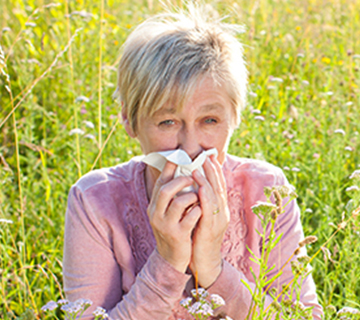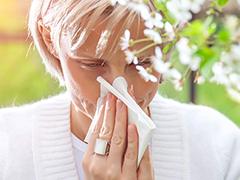How to Identify Seasonal Allergies

If you suffer from seasonal allergies, you’re not alone. Nearly 40 million people in America have pollen allergies, also known as hay fever or allergic rhinitis. Here’s how to identify the symptoms, and what to do to help manage the condition.
Six common symptoms of seasonal allergies
If you notice any of these symptoms during the spring or fall, they could be caused by an allergic reaction to mold or pollen in the air:
- Itchy eyes, nose, or throat
- Sniffling
- Sneezing
- Dark circles under your eyes
- Sinus infections
- More frequent asthma attacks
How to treat seasonal allergies
If you suspect you have allergies, visit your doctor, who can perform tests to confirm. Your results can also tell you what you’re specifically allergic to, so you can create a targeted treatment plan with your doctor. Some popular remedies include:
- Regular allergy shots
- Prescription medication
- Over-the-counter antihistamines
- Saline nasal sprays
- Vitamin C supplements
- Natural treatments, including butterbur extract, grape seed extract, quercetin supplements, nettle, and goldenseal
Article source link has expired

